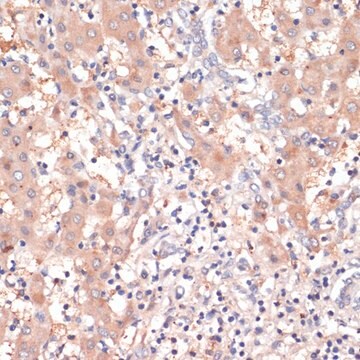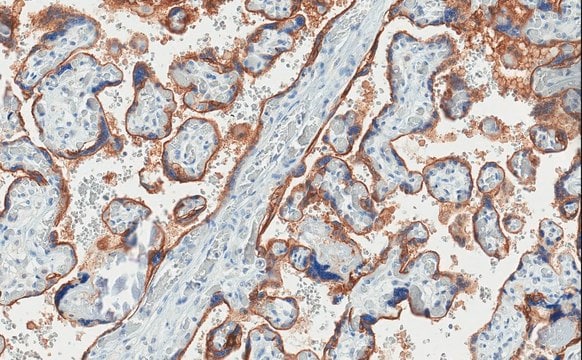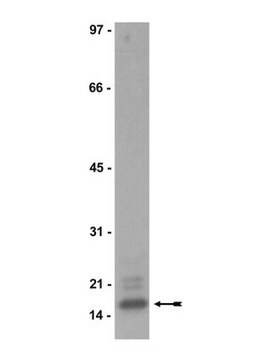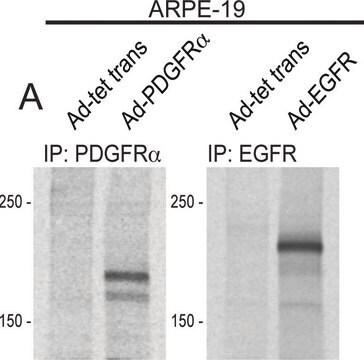05-1047
Anti-EGFR (cytoplasmic domain) Antibody, clone 8G6.2
clone 8G6.2, from mouse
Sinonimo/i:
Receptor tyrosine-protein kinase ErbB-1, avian erythroblastic leukemia viral (v-erb-b) oncogene
homolog, cell growth inhibiting protein 40, cell proliferation-inducing protein 61, epidermal growth factor receptor, epidermal growth factor recepto
About This Item
Prodotti consigliati
Origine biologica
mouse
Livello qualitativo
Forma dell’anticorpo
purified antibody
Tipo di anticorpo
primary antibodies
Clone
8G6.2, monoclonal
Reattività contro le specie
rat, mouse, human
tecniche
immunocytochemistry: suitable
immunohistochemistry: suitable
immunoprecipitation (IP): suitable
western blot: 1:2,000 using A431 cell lysate (used to detect EGFR)
western blot: suitable
Isotipo
IgG1κ
N° accesso NCBI
N° accesso UniProt
Condizioni di spedizione
wet ice
modifica post-traduzionali bersaglio
unmodified
Informazioni sul gene
human ... EGFR(1956)
mouse ... Egfr(13649)
rat ... Egfr(24329)
Descrizione generale
Specificità
Immunogeno
Applicazioni
A431 cells were grown, fixed, permeablized, and stained with anti-EGFR, clone 8G6.2
Confocal Immunocytochemistry Analysis:
A431 cells were grown, fixed, permeablized, and stained with anti-EGFR, clone 8G6.2
Immunoprecipitation:
100 μg of A431 whole cell lysate was lysed in RIPA buffer and immunoprecipitated (IP) with 5 μg of Anti-EGFR, cytoplasmic domain, clone 8G6.2
Immunohistochemistry Analysis:
Tissue was stained with anti-EGFR, cytoplasmic domain, clone 8G6.2 at a 1:100 dilution and IHC-Select Detection with HRP-DAB reagents.
Qualità
Western Blot Analysis:
1:2,000 dilution of this antibody was used to detect EGFR in A431 cell lysate.
Descrizione del bersaglio
Linkage
Stato fisico
Altre note
Non trovi il prodotto giusto?
Prova il nostro Motore di ricerca dei prodotti.
Raccomandato
Codice della classe di stoccaggio
12 - Non Combustible Liquids
Classe di pericolosità dell'acqua (WGK)
WGK 1
Punto d’infiammabilità (°F)
Not applicable
Punto d’infiammabilità (°C)
Not applicable
Certificati d'analisi (COA)
Cerca il Certificati d'analisi (COA) digitando il numero di lotto/batch corrispondente. I numeri di lotto o di batch sono stampati sull'etichetta dei prodotti dopo la parola ‘Lotto’ o ‘Batch’.
Possiedi già questo prodotto?
I documenti relativi ai prodotti acquistati recentemente sono disponibili nell’Archivio dei documenti.
Il team dei nostri ricercatori vanta grande esperienza in tutte le aree della ricerca quali Life Science, scienza dei materiali, sintesi chimica, cromatografia, discipline analitiche, ecc..
Contatta l'Assistenza Tecnica.








